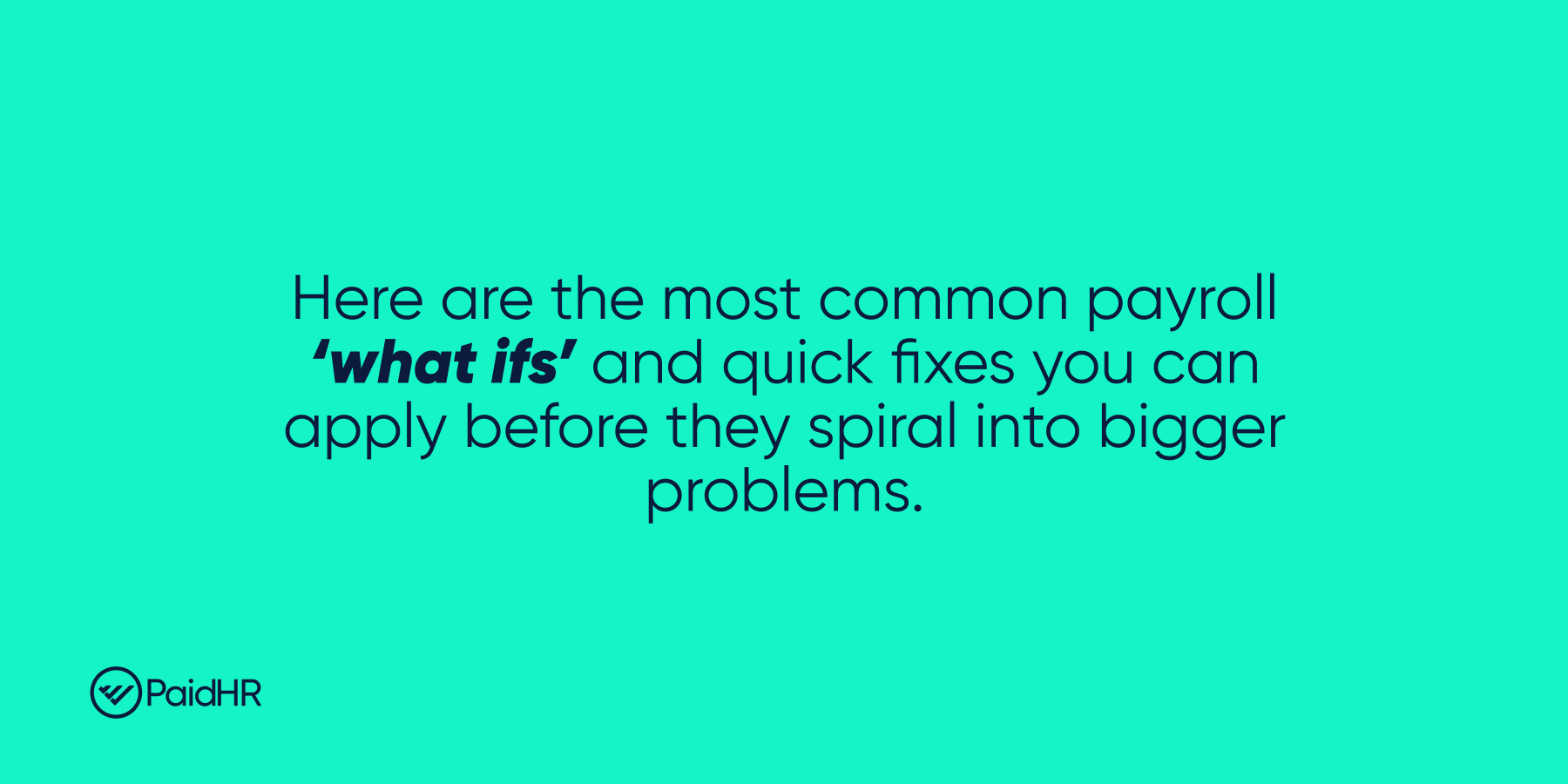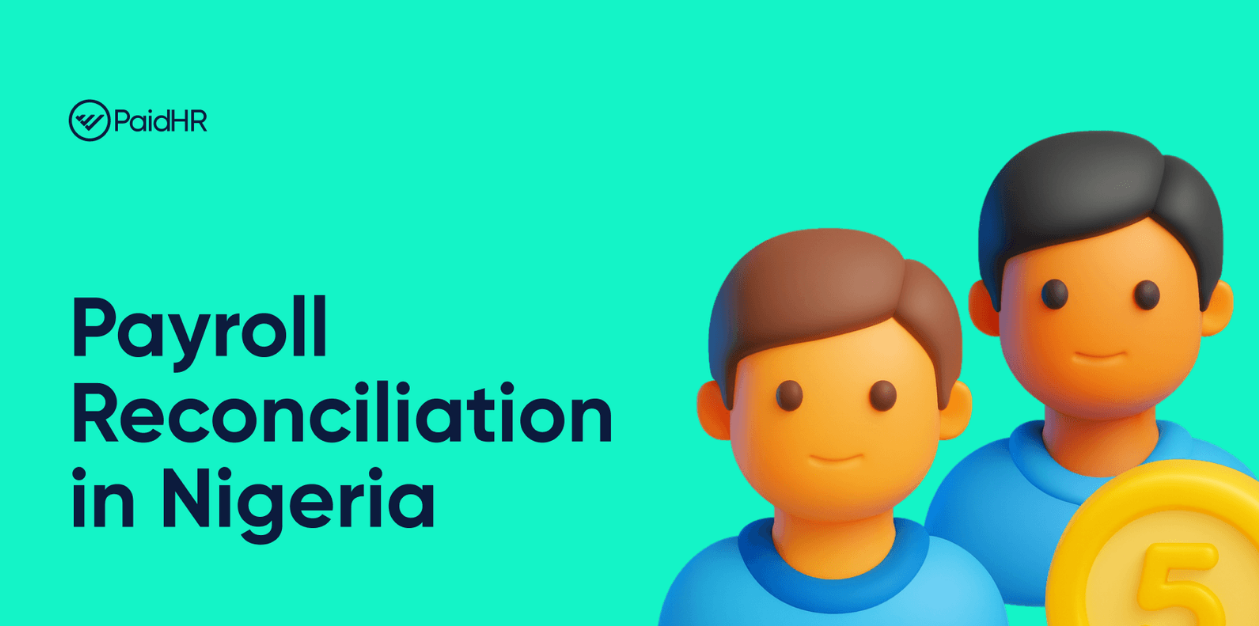Picture this: Adebayo, finance manager at a growing company in Nigeria, discovers the monthly payroll bill is ₦2.3 million over budget. After countless sleepless nights spent, spreadsheet after spreadsheet, he uncovers a mix of ghost employees, incorrect PAYE payments, and pension contributions that do not match PFA remittance reports. This reputationally damaging situation is completely preventable.
Payroll reconciliation in Nigeria is the process of verifying that every salary payment, deduction, and statutory remittance matches employee records, bank movements, and regulatory filings. Think of it as investigative accounting where every naira must be tracked and every deduction justified.
What is Payroll Reconciliation?
Payroll errors are the problems themselves. In a previous article on Payroll Errors that cost Nigerian startups millions (and how to avoid them), I explored the top three of these mistakes in detail.
Here are some other payroll errors to check out for:
Pension mismatches
By law, both employer and employee contribute to pensions but errors creep in when payroll records do not match the Pension Fund Administrator’s (PFA) remittance reports. Sometimes the wrong percentage is applied, sometimes contributions are based on the wrong salary figure, or an employee’s account is not set up properly. These mismatches frustrate staff and can lead to compliance issues.
Pro-rata mistakes
When someone joins mid-month, resigns, or takes unpaid leave, their salary should be adjusted fairly (pro-rated). A common mistake is paying a full month’s salary instead of a partial one, or deducting more than necessary. It seems small, but even one error can reduce employee trust and add up to significant losses over time.
Ghost employees and duplicate records
This happens when someone who no longer works in the company still appears on payroll, or when duplicate records accidentally create “two salaries” for one employee. Ghost employees are one of the oldest payroll fraud tricks in the book, and duplicate records often stem from poor data cleanup. Both can drain company funds without being noticed quickly.
Bank transfer discrepancies
Even if payroll is calculated correctly, mistakes can still happen at the payment stage. Employees may get paid twice due to duplicate transfers, or their salary may be sent to the wrong account number. Fixing these errors takes time and can damage trust, especially if staff rely on salaries for urgent expenses.
Industry-specific quirks
Different industries have payroll challenges unique to their work. In healthcare, overtime hours are common and need careful calculation. In oil and gas, hazard pay and site allowances must be handled correctly. For multinational firms, foreign allowances or salaries tied to FX rates bring another layer of complexity. Missteps here often result in disputes or regulatory attention.
Having explained this, payroll reconciliation is the systematic process of finding and fixing these payroll errors. By demonstrating how reconciliation in payroll functions as your forensic tool to identify, look into, and stop such problems before they ever affect your balance sheet, this tutorial goes one step further.
Why Payroll Reconciliation Matters for Nigerian Businesses
Accuracy in pay and deductions is critical
Payroll mistakes immediately erode employee trust and can cause staff to leave in Nigeria’s competitive labour market. Even minor mistakes in pro-rata, overtime, or allowance calculations can quickly escalate into major tax and pension issues.
Compliance with Nigerian regulations
Nigeria’s payroll regulations are not exactly straightforward. Pay-As-You-Earn, the Pension Reform Act, NHF contributions, and state and federal taxes all have different thresholds, bases, and remittance rules. Mistakes can trigger penalties, interest, and regulatory scrutiny. If you are still struggling with calculating taxes, understanding tax calculation is an article to help with that.
Fraud prevention and reputation
One frequent fraud route is payroll. Ghost employees and unauthorised manual payments happen. Regular reconciliation exposes these schemes early and shows employees you take accuracy seriously, boosting trust and helping with talent retention.
Your Payroll Investigative Toolkit
Before you begin the process of monthly payroll reconciliation (yes, this should be done every month), here are the documents needed to get you started
Treat these as evidence. Cross-reference them. If one piece is missing, your case is incomplete.
How to Do Payroll Reconciliation in 5 Steps
Step 1: Gather your clues
Start by collating every piece of payroll evidence: payslips, bank statements, pension reports, tax filings, and HR records. Group them by pay period so you can see each month as a single case file. If anything is missing, you’re starting with blind spots, and blind spots let mistakes hide.
Step 2: Spot the big-picture gaps
Before diving into details, compare the headline numbers: total gross pay, total deductions (broken down by tax, pension, loans, etc.), and total net pay. Match these against your bank debit total, pension contribution total, and tax remittance total. Large mismatches here often point to deeper, systemic problems, like using the wrong tax table for an employee or missing entire batches of staff.
Step 3: Test your “what if” hunches
Work like a detective with hunches to prove or disprove. For example:
- If the bank debit is higher than the net pay totals, suspect duplicate transfers or manual overpayments.
- If tax deductions don’t match your filing, suspect wrong calculations or missing bonus classifications.
- If pension reports are short, suspect missing employees or wrong PFA codes.
Follow the track that corresponds with the symptom you observe rather than checking everything at once, so you don’t become overwhelmed.
Step 4: Keep a case log
Every time you spot a mismatch, write it down: which employee or account it affects, how big the difference is, what you think caused it, what evidence supports your theory, and how you fixed it. This is how you turn one-off corrections into permanent prevention.
Step 5: Fix, verify, and lock it down
Once you’ve corrected the errors, run the reconciliation again to confirm everything lines up. Pay any missing statutory amounts, adjust your payroll process so the same issue can’t slip through again, and store your updated playbook for next time. Once complete, your payroll is reconciled and ready for the next period.
Some likely scenarios and quick fixes

- If: Bank shows you paid more than your payroll totals.
Then likely: Duplicate or extra payments.
Do: Check the bank transfer references against the payroll export. Cancel or reverse any duplicate payments. - If: Payroll totals are higher than the bank debit (some staff weren’t paid).
Then likely: Failed transfers or wrong account numbers.
Do: Run the bank failed-payments report and match unpaid rows to employee bank details. - If: PAYE on your payroll ≠ PAYE on tax receipts.
Then likely: Wrong tax table or bonus treated as normal pay.
Do: Confirm the tax table version and reclassify bonuses if needed; recalc the tax. - If: Pension deductions in payroll ≠ PFA statement.
Then likely: Missed employees, wrong contribution base, or bad PFA codes.
Do: Match employee IDs and contribution amounts to the PFA report; fix and remit shortfalls. - If: One employee’s net pay isn’t what you calculated.
Then likely: Loan repayment, unpaid leave, or manual change.
Do: Check loan schedules, leave records and the payroll change log for that employee. - If: PAYE spikes suddenly in one month.
Then likely: A bonus or arrears were taxed as regular pay.
Do: Look at that month’s payslips for one-off payments and reclassify if necessary. - If: A team’s overtime totals appear incorrect.
Then likely: Missing approvals or incorrect overtime rate.
Do: Recalculate using the appropriate overtime rate after comparing timesheets to OT approvals.
- If: A new hire’s pay is too low or too high for the days worked.
Then likely: Wrong start date or wrong proration method.
Do: Check the hire date in HR records and recalculate pro-rata pay. - If: Foreign currency payments don’t match naira amounts.
Then likely: Wrong FX rate or wrong conversion date used.
Do: Verify which FX rate/date was applied and revalue the payments. - If: You find duplicate employee records or a ghost record.
Then likely: Data-entry duplicates or fraud.
Do: Match TINs/NINs and bank accounts, remove duplicates, and tighten new-user setup controls.
Preventive Controls
We want to ensure that you do not have to always discover big issues before payroll reconciliation comes to mind since the process is quite tedious and time consuming. For this to happen, make these controls non-negotiable:
- Monthly payroll reconciliation should be non-negotiable and a standard practice.
- Segregation of duties for payroll set-up, approval, and payment.
- Mandatory supervisory sign-off on hires, salary changes, and new bank accounts.
- Maintain a change log for payroll data edits with timestamps and user IDs.
- Use Nigerian-compliant payroll software.
- Give employees access to view their payslips and a simple channel for reporting discrepancies.
Essential Checklist for Your Monthly Payroll Reconciliation
To ensure you are always right on track, we have put together a checklist to run your payroll reconciliation easily every month.
Making Payroll Reconciliation Easier
Payroll reconciliation doesn’t have to feel like detective work every single month. Once you understand where errors usually hide and adopt a structured approach, the process becomes much less overwhelming. For Nigerian businesses especially, where PAYE, pensions, and compliance requirements can get tricky, having a clear system in place is the difference between smooth payroll and costly mistakes.
To make this easier, we’ve created a simple, step-by-step Payroll Reconciliation Checklist tailored for Nigerian businesses. It’s a practical tool you can use every month to stay compliant, spot errors early, and save valuable time.
Payroll Reconciliation in PaidHR
In many businesses, reconciliation means moving between spreadsheets, bank statements, and pension reports to make sure everything balances. PaidHR brings these records together in one place so nothing gets lost in the shuffle.
All transactions processed in the system are grouped into categories (payouts, withdrawals, invoices, statutory payments, earned wage access, and subscriptions), making it easier to trace money in (credits) and money out (debits). For anyone checking for discrepancies, a full transaction log can be downloaded at any time.
Payroll runs made through direct transfer are tied to a unique transaction ID, so each payment can be traced back instantly. This reduces the back-and-forth usually required when checking records. And when additional help is needed, customer support is available to walk through the process.
Rather than replacing your reconciliation steps, PaidHR gives you a clearer, more centralised way to confirm they’ve been done right.






